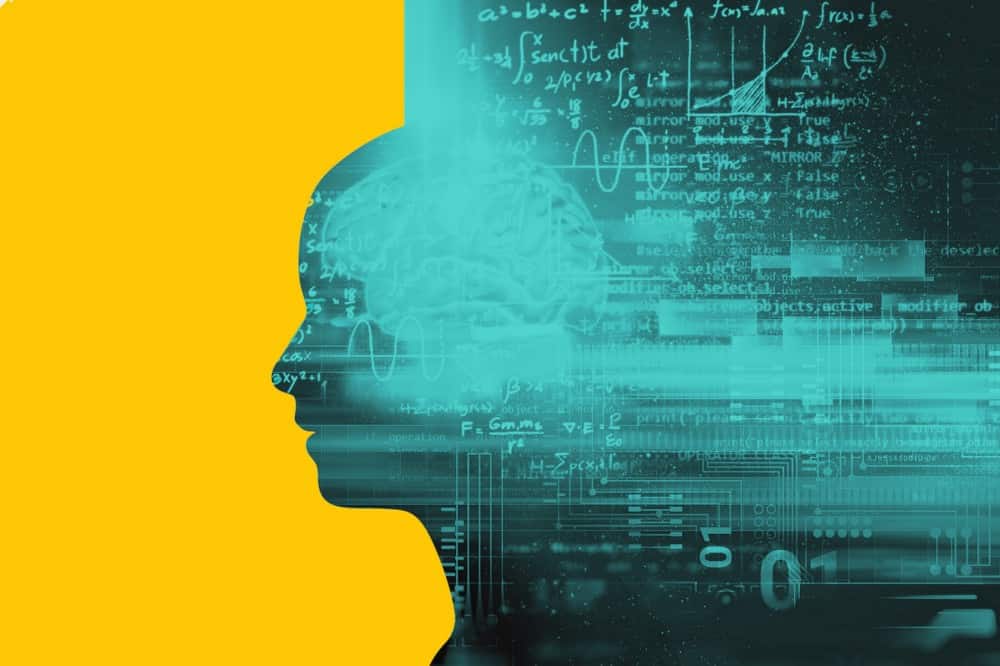
Artificial intelligence can be used to predict the behavior of players and mimic human behavior. Artificial intelligence in games helps to regulate player performance through the classification and prediction of players' actions. AI in games can be used to regulate player behavior and classify them in real time. However, it's not clear how much AI in games has already achieved. This article explores the benefits and future of AI-based games. Keep reading for more information! Is AI used in games?
Artificial Intelligence used in video games
Unintended consequences of AI can be surprising. AI in video games can run away when your health is poor, hide behind cover objects when you run out of bullets, etc. While it is not dangerous for players, its unintended behavior can be annoying. This article will look at some of the most prevalent examples of AI in videogames.
Ad-hoc behavior writing is often used to implement AI in games. This method is manual and limited to certain situations. AI is typically implemented in videogames by coding agents' behavior according to the player's environment. AI does not offer all the learning capabilities. In addition to machine learning and deep learning, other forms of AI have been applied to video games. AI-based AI can be seen in Total War games using perceptrons to manage units.

Examples of AI games
From the very beginning, AI research has focused on game playing. In 1951, computer scientists created Nim, the first game that could be played on a computer. It was a tiny box but it managed to beat highly-trained individuals. Then, in 1952, Dietrich Prinz and Christopher Strachey created checkers and chess programs for the Ferranti Mark 1 machine at the University of Manchester. AI is becoming more sophisticated and even the simplest game can be made more difficult and engaging with today's AI.
AI and game design are making games more interesting. Gamemakers push the boundaries of technology to improve their games. Deep learning and reinforcement learning, two main branches of AI, are most commonly applied in games. This is because games provide easy data and conditions to apply AI techniques. Examples of AI in games include classic Atari titles like Space Invaders and the Chinese board game go. These games offer researchers an ideal environment to test new AI techniques.
Benefits
The recent trend of artificial intelligence being used in games is spreading across all industries. The technology is integral to nearly all fields, including finance and robotics. AI has several key benefits for the gaming industry. Here are three of the most compelling reasons to incorporate AI into your next game:
Artificial intelligence is not a substitute for humans in game design but a tool for game developers. Petz is a game where players can train their digital pets to change their behavior. AI is less capable of controlling the gaming experience for players. For example, human players can repeatedly show up in the same location, whereas the AI will never go there. The AI will automatically attack a specific location, without looking elsewhere.

Future of AI in games
AI in games is a promising future. AI will offer players unique experiences by combining content with systems. AI programmers will be able to create challenging games for players. But most of them will have to consider the current markets for games in order to make their creations successful. It will be exciting to see the progress AI programmers make in the current game industry. But how far can AI go?
Today's video games often include some type of AI. Modern AI can provide game developers with many benefits, including improved photorealistic effects, content generation, balance, and intelligence for non-playing characters. These AI advancements will save game companies both time and money. But how will the future look? AI will soon be the next big thing. However, it will take time before it becomes mainstream.
FAQ
What is the role of AI?
An algorithm refers to a set of instructions that tells computers how to solve problems. An algorithm can be described as a sequence of steps. Each step has a condition that dictates when it should be executed. A computer executes each instruction sequentially until all conditions are met. This process repeats until the final result is achieved.
For example, let's say you want to find the square root of 5. If you wanted to find the square root of 5, you could write down every number from 1 through 10. Then calculate the square root and take the average. It's not practical. Instead, write the following formula.
sqrt(x) x^0.5
This is how to square the input, then divide it by 2 and multiply by 0.5.
A computer follows this same principle. It takes your input, squares and multiplies by 2 to get 0.5. Finally, it outputs the answer.
Where did AI come from?
The idea of artificial intelligence was first proposed by Alan Turing in 1950. He believed that a machine would be intelligent if it could fool someone into believing they were communicating with another human.
John McCarthy wrote an essay called "Can Machines Thinking?". He later took up this idea. McCarthy wrote an essay entitled "Can machines think?" in 1956. He described in it the problems that AI researchers face and proposed possible solutions.
What is the latest AI invention?
The latest AI invention is called "Deep Learning." Deep learning (a type of machine-learning) is an artificial intelligence technique that uses neural network to perform tasks such image recognition, speech recognition, translation and natural language processing. Google created it in 2012.
Google's most recent use of deep learning was to create a program that could write its own code. This was done with "Google Brain", a neural system that was trained using massive amounts of data taken from YouTube videos.
This allowed the system's ability to write programs by itself.
IBM announced in 2015 they had created a computer program that could create music. Also, neural networks can be used to create music. These are sometimes called NNFM or neural networks for music.
Are there any AI-related risks?
It is. There will always be. AI is seen as a threat to society. Others argue that AI can be beneficial, but it is also necessary to improve quality of life.
AI's misuse potential is the greatest concern. It could have dangerous consequences if AI becomes too powerful. This includes robot overlords and autonomous weapons.
AI could also replace jobs. Many people are concerned that robots will replace human workers. Some people believe artificial intelligence could allow workers to be more focused on their jobs.
Some economists even predict that automation will lead to higher productivity and lower unemployment.
What is the future of AI?
The future of artificial intelligent (AI), however, is not in creating machines that are smarter then us, but in creating systems which learn from experience and improve over time.
We need machines that can learn.
This would involve the creation of algorithms that could be taught to each other by using examples.
You should also think about the possibility of creating your own learning algorithms.
It is important to ensure that they are flexible enough to adapt to all situations.
What are some examples AI applications?
AI is being used in many different areas, such as finance, healthcare management, manufacturing and transportation. These are just a few of the many examples.
-
Finance - AI has already helped banks detect fraud. AI can scan millions of transactions every day and flag suspicious activity.
-
Healthcare – AI is used for diagnosing diseases, spotting cancerous cells, as well as recommending treatments.
-
Manufacturing – Artificial Intelligence is used in factories for efficiency improvements and cost reductions.
-
Transportation – Self-driving cars were successfully tested in California. They are being tested in various parts of the world.
-
Utilities are using AI to monitor power consumption patterns.
-
Education - AI can be used to teach. Students can communicate with robots through their smartphones, for instance.
-
Government - AI can be used within government to track terrorists, criminals, or missing people.
-
Law Enforcement – AI is being used in police investigations. Databases containing thousands hours of CCTV footage are available for detectives to search.
-
Defense - AI can both be used offensively and defensively. In order to hack into enemy computer systems, AI systems could be used offensively. For defense purposes, AI systems can be used for cyber security to protect military bases.
How does AI work?
An artificial neural system is composed of many simple processors, called neurons. Each neuron processes inputs from others neurons using mathematical operations.
The layers of neurons are called layers. Each layer performs a different function. The first layer receives raw data like sounds, images, etc. It then passes this data on to the second layer, which continues processing them. Finally, the last layer produces an output.
Each neuron is assigned a weighting value. This value is multiplied when new input arrives and added to all other values. If the number is greater than zero then the neuron activates. It sends a signal down to the next neuron, telling it what to do.
This process repeats until the end of the network, where the final results are produced.
Statistics
- According to the company's website, more than 800 financial firms use AlphaSense, including some Fortune 500 corporations. (builtin.com)
- By using BrainBox AI, commercial buildings can reduce total energy costs by 25% and improves occupant comfort by 60%. (analyticsinsight.net)
- A 2021 Pew Research survey revealed that 37 percent of respondents who are more concerned than excited about AI had concerns including job loss, privacy, and AI's potential to “surpass human skills.” (builtin.com)
- That's as many of us that have been in that AI space would say, it's about 70 or 80 percent of the work. (finra.org)
- While all of it is still what seems like a far way off, the future of this technology presents a Catch-22, able to solve the world's problems and likely to power all the A.I. systems on earth, but also incredibly dangerous in the wrong hands. (forbes.com)
External Links
How To
How to configure Alexa to speak while charging
Alexa, Amazon’s virtual assistant is capable of answering questions, providing information, playing music, controlling smart-home devices and many other functions. It can even hear you as you sleep, all without you having to pick up your smartphone!
Alexa is your answer to all of your questions. All you have to do is say "Alexa" followed closely by a question. She will give you clear, easy-to-understand responses in real time. Alexa will improve and learn over time. You can ask Alexa questions and receive new answers everytime.
You can also control other connected devices like lights, thermostats, locks, cameras, and more.
Alexa can also be used to control the temperature, turn off lights, adjust the temperature and order pizza.
Setting up Alexa to Talk While Charging
-
Open Alexa App. Tap Settings.
-
Tap Advanced settings.
-
Select Speech Recognition
-
Select Yes, always listen.
-
Select Yes, only the wake word
-
Select Yes to use a microphone.
-
Select No, do not use a mic.
-
Step 2. Set Up Your Voice Profile.
-
You can choose a name to represent your voice and then add a description.
-
Step 3. Step 3.
Speak "Alexa" and follow up with a command
Example: "Alexa, good Morning!"
Alexa will answer your query if she understands it. For example, "Good morning John Smith."
Alexa will not reply if she doesn’t understand your request.
If you are satisfied with the changes made, restart your device.
Notice: You may have to restart your device if you make changes in the speech recognition language.